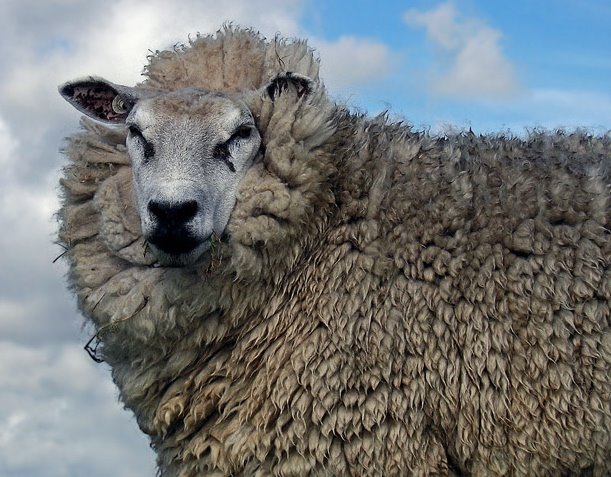The ewe that provides the rich milk for Roquefort cheese comes of a race originally bred in Neolithic times.

It is a remarkably silly-looking sheep with a little flat head, narrow shoulders, a shabby coat of wool. But it has huge udders that can produce 35 gallons of milk a season, up to 110 in prize specimens, and it is quite robust, resistant to the harsh climate.

Local shepherds will tell you that the shallowness of the soil—you can strike solid limestone about four inches down- adds a special richness to the taste of the milk, by limiting the animals' diet to delicate grass.

Roquefort will always cost more than other cheeses, if only because it is more expensive to milk 30 ewes than one cow in order to get an equivalent amount of milk. (These vintage postcard milk cans are filled with frothy warm ewe's milk).

But Roquefort folk insist their cheese is really an economical buy. Unlike Camembert, or Pont 1' Eveque, say, there is little waste, and no crust. Besides, the cheese itself is so rich and satisfying—ewe's milk being twice as rich in butterfat as cow's—that you don't need to eat so much of it.

If you are interested in photos from this region their is a great gal over at an American in Averyron. who has a daily photo blog:)
This article was written by:
1980 Robert Wernick
Smithsonian Magazine February 1982
It was just too nifty to change:)